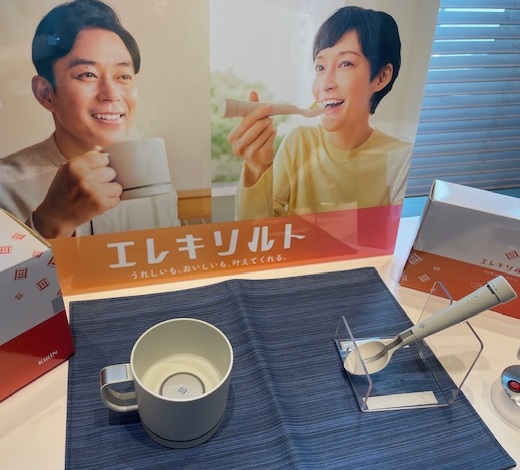Photo by Foovo (Ayumi Sato)
Kirin Holdings launched its new product “Electric Salt Cup” on September 9, 2025. This product uses electrical power to enhance saltiness and umami flavor.
It was newly developed in response to feedback received on the “Electric Salt Spoon,” a salt-reduction support utensil launched last year. A renewed version of the spoon was also released. In addition to the official online store, in-store sales will begin at retailers like Hands and Bic Camera starting in November.
At the launch event held on September 9, I tried Low-Sodium soup using the “Electric Salt Cup.”
Kirin Launches New “Electric Salt Cup”

Kirin launched its Health Science business in 2019. Following the transfer of its amino acid business, the company expects this division to turn profitable for the first time in fiscal 2025. Aiming for over ¥30 billion in business profits by 2030, Health Science Business Division General Manager Yoshimura Toru stated, “We aim to make this a business that drives profit growth for the entire group.”
Kirin promotes “building foundational health” centered on plasma lactic acid bacteria while also aiming to solve “individual health challenges.” This vision materialized with the May 2024 launch of the “Electric Salt Spoon.”
Ai Sato, Head of the Health Science Business Division and responsible for the Electric Salt business, noted, “Japanese people consume about twice the salt intake recommended by the WHO. Japan and other Asian countries have a food culture that tends to favor relatively salty tastes.”
She pointed out that even when people understand the importance of reducing salt intake, it is difficult to sustain, and drastically changing familiar meals can lead to a decrease in satisfaction and appetite.
The solution the company developed was to use electricity to compensate for the lack of satisfaction in reduced-salt foods.

The “Electric Salt Spoon” sold 2,650 units in the seven months from its launch until December last year, securing orders seven times the initial projected volume. Sato stated that 40% of buyers purchased it for their own salt reduction efforts, another 40% bought it for family or friends who felt salt reduction was an issue, and the remaining 20% purchased it from a preventative perspective.
While the response was positive, requests for forms other than spoons and for dishwasher compatibility led to the development of this new product in collaboration with Meiji University and Yaman.
Experiencing the Electric Salt Cup with Low-Salt Soup
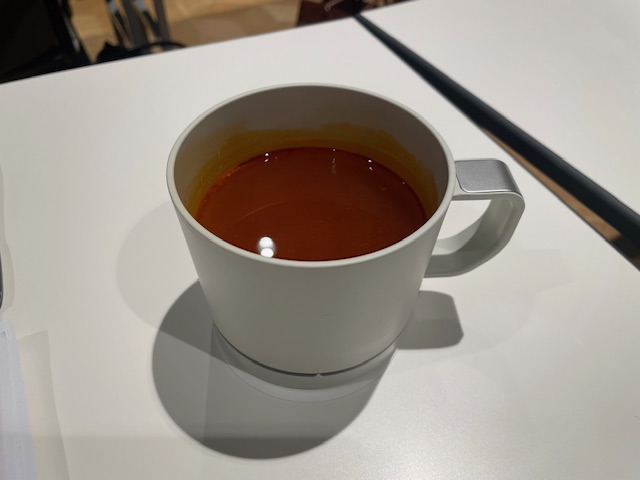
This is the actual Electric Salt Cup. Visually, it looks just like a regular mug.
Holding the handle, which contains an electrode panel, and bringing the cup to your lips allows a weak electric current to flow from the electrodes inside the cup. This mechanism enhances the perception of flavors like saltiness and umami.
By applying this weak current, it draws sodium ions—the source of saltiness dispersed in the mouth—towards the tongue, making the saltiness more noticeable. According to the company, the saltiness enhancement effect is approximately 1.5 times greater.
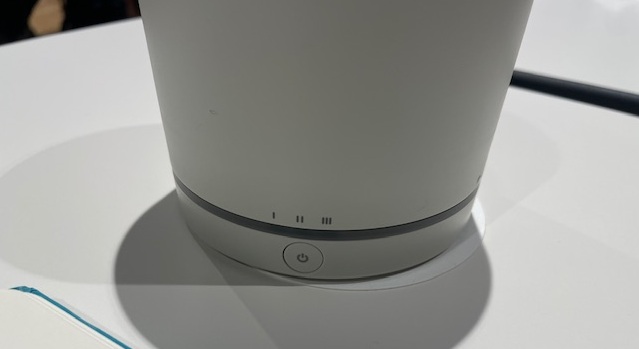
At the launch event, they served minestrone soup with salt content reduced to the standard 0.5-0.6%. Users can choose from three intensity levels. The key is to keep your mouth on the cup for at least 0.5 seconds; once you do, the weak current flows for about 2 seconds.
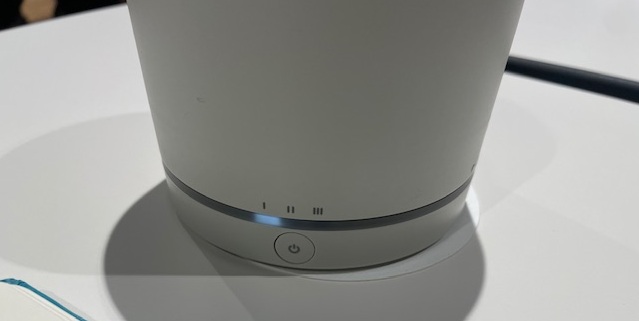
When actually trying it, even at the weakest Intensity 1, I felt the taste intensify when my mouth touched the cup. When my tongue touched the soup, I felt a faint sensation of electricity “coming in,” and at that moment, the taste definitely intensified. I got the impression that not just the saltiness, but the overall flavor of the soup was enhanced.
I felt the effect was sufficient at intensities 1 and 2, but as the soup level in the cup decreased, the enhancement effect seemed to weaken.
Mr. Sato stated that while they had tested a bowl-shaped prototype before the cup version, numerous technical challenges prevented its practical implementation. Leveraging Yaman’s waterproofing and electrical design expertise, they successfully commercialized the product as a cup design.
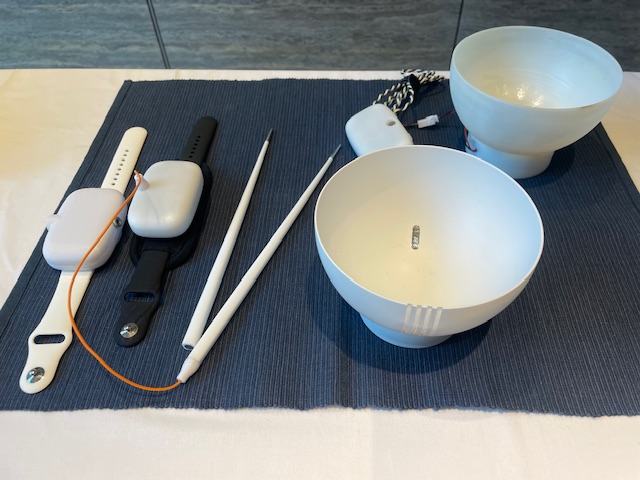
Aiming for sales launch in Asia by 2026.

Furthermore, beyond Electric Salt, development of reduced-salt solutions is progressing domestically.
Ajinomoto developed “electrical seasoning” technology for devices last September. This technology allows users to feel electrical stimulation even while chewing or swallowing. The company has developed multiple prototype versions that attach around the neck or ear.
Kirin has set a sales target of over 10,000 units for the new product in 2025. It aims to begin sales in Asia in 2026.
Yoshimura stated, “We want to tackle not only apparent health challenges but also potential ones, proactively entering business areas that connect to the future to deliver new health value.”
In the long-term, Kirin also envisions developing electric taste technology beyond salt reduction and umami. I hope this will expand to address the next challenge such as curbing excessive sugar intake.
This article is an English translation of a Foovo article, published with permission from Foovo.
You may also LIKE
TECHMAGIC Rolls Out Cooking Robot “I-Robo2” at First Restaurant Location
NEXTAGE Raises Series A Funding to Develop Automated Wasabi Cultivation Modules

